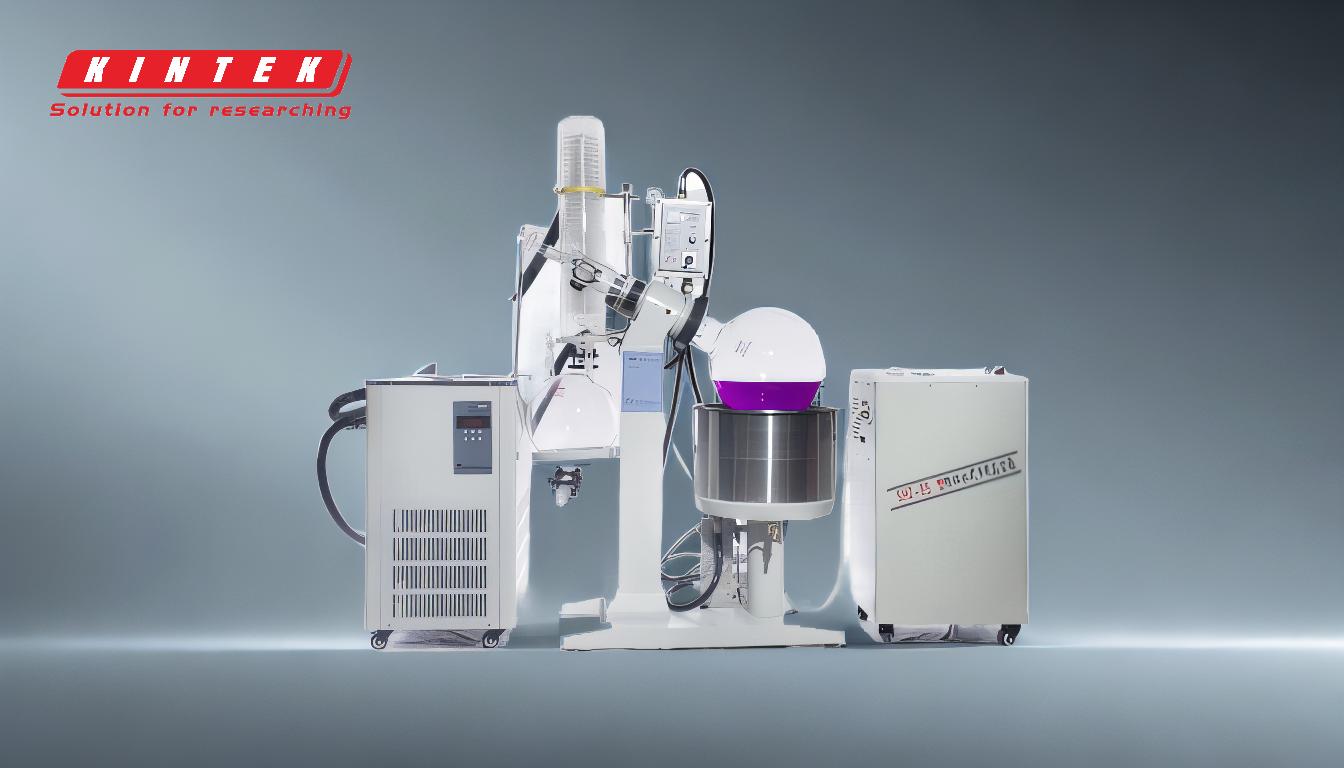Rotating the flask during rotary evaporation is a critical step that significantly enhances the efficiency of the process. The primary reason for rotating the flask is to increase the surface area of the solvent exposed to the reduced pressure and controlled heating conditions. This is achieved through the centrifugal force generated by the rotation, which spreads the liquid into a thin film along the inner walls of the flask. This thin film provides a much larger surface area compared to a static liquid, thereby accelerating the evaporation rate. Additionally, the rotation helps prevent "bumping," a phenomenon where large pockets of solvent vapor form rapidly and displace the surrounding liquid, which can lead to loss of sample or contamination. The combination of increased surface area, agitation, and reduced pressure ensures a more efficient and controlled evaporation process.
Key Points Explained:

-
Increased Surface Area for Evaporation:
- Mechanism: The rotation of the flask causes the liquid to spread out into a thin film along the inner walls due to centrifugal force.
- Impact: This thin film significantly increases the surface area of the solvent exposed to the reduced pressure and heating, thereby accelerating the evaporation process.
- Example: In a static flask, the liquid would only evaporate from the top surface, but in a rotating flask, the entire inner surface becomes an evaporation zone.
-
Prevention of Bumping:
- Mechanism: Rotation helps to distribute the heat evenly and prevents the formation of large vapor bubbles that can cause "bumping."
- Impact: Bumping can lead to sudden bursts of vapor that may cause loss of sample or contamination. By preventing this, rotation ensures a smoother and more controlled evaporation process.
- Example: Without rotation, localized heating could create large vapor pockets that suddenly burst, disrupting the process.
-
Enhanced Heat Transfer:
- Mechanism: The continuous movement of the liquid film ensures that heat from the water bath is more evenly distributed throughout the solvent.
- Impact: This uniform heating further accelerates the evaporation rate and prevents hotspots that could degrade sensitive compounds.
- Example: In a rotating flask, the solvent is constantly moving, ensuring that all parts of the liquid are equally exposed to the heat source.
-
Efficiency and Speed:
- Mechanism: The combination of increased surface area, reduced pressure, and controlled heating leads to a more efficient evaporation process.
- Impact: This allows for quicker removal of solvents, which is particularly beneficial in time-sensitive applications or when dealing with large volumes.
- Example: In a laboratory setting, this means that multiple samples can be processed in a shorter amount of time, increasing overall productivity.
-
Reduced Risk of Contamination:
- Mechanism: The controlled environment created by the rotation, combined with reduced pressure, minimizes the risk of contaminants entering the system.
- Impact: This is crucial for applications requiring high purity, such as in pharmaceutical or analytical chemistry labs.
- Example: In a non-rotating setup, there is a higher chance of contaminants being introduced during the evaporation process, which could compromise the integrity of the sample.
-
Optimized Solvent Recovery:
- Mechanism: The efficient evaporation process facilitated by rotation ensures that solvents are recovered more effectively.
- Impact: This is particularly important in industries where solvent recovery is a key concern, both for cost savings and environmental reasons.
- Example: In industrial applications, the ability to recover solvents efficiently can lead to significant cost reductions and a smaller environmental footprint.
By understanding these key points, it becomes clear why rotating the flask is an essential part of the rotary evaporation process. It not only enhances the efficiency and speed of evaporation but also ensures a more controlled and safer environment for handling sensitive materials.
Summary Table:
| Key Benefit | Mechanism | Impact |
|---|---|---|
| Increased Surface Area | Rotation spreads liquid into a thin film, increasing exposure to heat and pressure. | Accelerates evaporation and improves process efficiency. |
| Prevention of Bumping | Even heat distribution prevents large vapor bubbles from forming. | Reduces sample loss and contamination risks. |
| Enhanced Heat Transfer | Continuous movement ensures uniform heating. | Prevents hotspots and protects sensitive compounds. |
| Efficiency and Speed | Combines increased surface area, reduced pressure, and controlled heating. | Speeds up solvent removal, ideal for time-sensitive applications. |
| Reduced Contamination Risk | Controlled rotation and reduced pressure minimize contaminant entry. | Ensures high purity, critical for pharmaceutical and analytical labs. |
| Optimized Solvent Recovery | Efficient evaporation ensures better solvent recovery. | Saves costs and reduces environmental impact in industrial applications. |
Discover how rotary evaporation can optimize your lab processes—contact our experts today!















